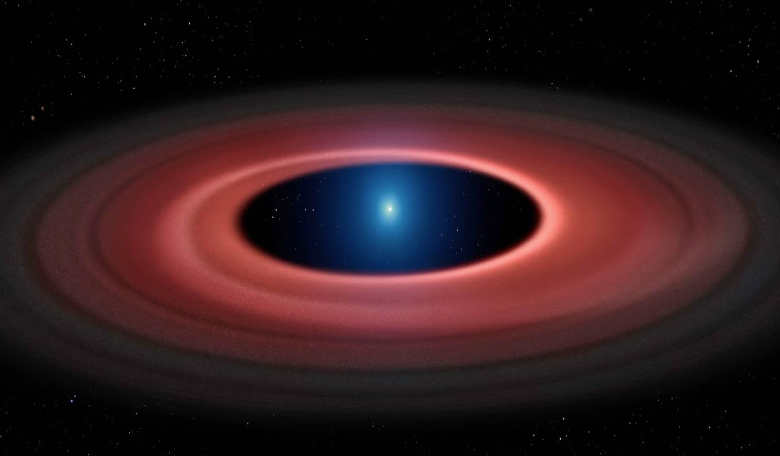A small, dense dying star, which is about as massive as the Sun yet only slightly bigger than the Earth, has been erupting so regularly for millions of years it has left behind a “super-remnant” – a shell of material so huge that it measures almost 400 light years across.
The frequently exploding star is a white dwarf located in the nearby Andromeda galaxy named M31N 2008-12a. White dwarfs are what stars like the Sun become after they have exhausted their nuclear fuel. With no more elements to ignite and burn away, the core becomes packed with atoms that have turned degenerate and broken down.
The only way this compacted body continues to shine, albeit very dimly, is because it has have trapped a huge amount of heat inside, but that will not last forever. Eventually the heat will radiate away and the once luminous star will fade into obscurity as a black dwarf.
However, despite the fact that they are dying, some white dwarfs, if close to another stellar companion, can leach off material from its neighbour to such a degree that the piled on gas will cause the white dwarf to explode as a nova once it reaches a critical mass.
The dramatic and sudden energies created ejects material into space at thousands of miles per second and causes the star to brighten by a millionfold. The luminosity associated with this cataclysmic event is so predictable, that astronomers often use these type of novas, known as Type Ia novas, as standard candles in which to determine distances to other celestial objects.
It is not unusual for a nova to erupt more than once. Some erupt as frequently as every decade, but M31N 2008-12a is different. It likes to explode on a yearly basis; a feature that has turned M31N 2008-12a from a regular material-maker into a monster material-producing machine, as currently no remnant larger than one parsec (3.26 light years) across from any single classical or recurrent nova eruption is known about, say the authors of the new research recently submitted to Nature.
It all bodes well for the Universe though, as all of these atoms and molecules will one day coalesce into a big cloud that will eventually break down into clumps to form stars and planets. With a ring of debris spanning a staggering 400 light years, that is a lot of planet-building material to get going with [to put the distance into perspective, the nearest star to us (Proxima Centauri) is ‘only’ four light years away and it would take a human travelling at a constant velocity of 60,000 kilometres per hour, 76,000 years to get there from Earth].
Although this super-remnant is the first of its kind to be found, it could be the first of many. The discovery of more of these monster-material makers and the super-shells they leave behind will help identify systems undergoing repeated eruptions and help astronomers determine how many Type Ia supernovae are formed.
"They are, in effect, the measuring rods that allow us to map the visible universe," said Allen Shafter an astrophysicist from San Diego State University who helped find M31N 2008-12a. "Despite their importance, we don't fully understand where they come from.”











